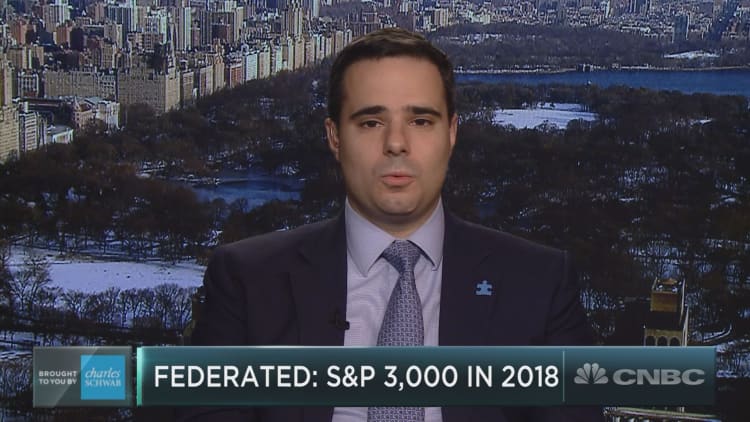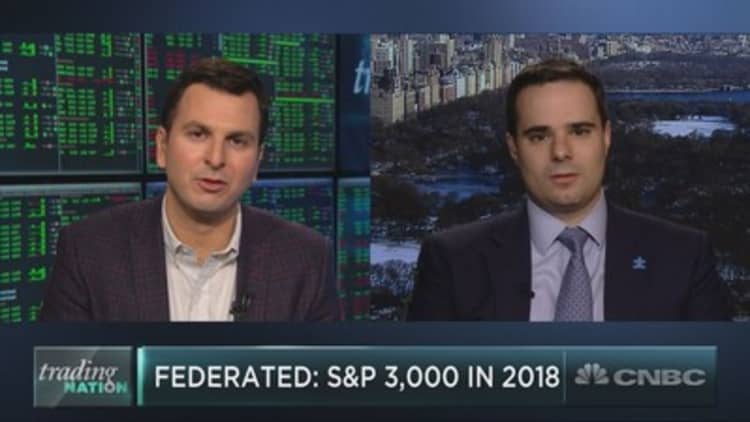
The bulls are getting more bullish.
The major indexes soared to record highs Monday, and the market rally is showing no signs of quitting anytime soon, according to one portfolio manager who sees the soaring another 11 percent next year.
Steve Chiavarone, portfolio manager at Federated Investors, expects the S&P 500 to hit 3,000 by the end of next year, making him one of the most optimistic market watchers on Wall Street. This target, too, is more bullish than he was just weeks ago. Last month he told CNBC's "Trading Nation" that his 2018 price target was 2,750.
Chiavarone expects earnings growth to be one of the key underpinnings of the next leg higher.
"Unlike most years, we think that the actual earnings numbers are going to come in above analysts' expectations. Analyst expectations have been rising all year; that doesn't happen often, but it does happen. And when it does, we're usually above 3 to 4 percent below the final number, at this point," he said Friday on "Trading Nation."
"When you throw in tax reform, which looks like it's going to hit in 2018 rather than be delayed to 2019, we think we're in for an earnings number that is $150 or maybe even slightly north of that," he added Friday.
Specifically, the portfolio manager looks to a measure that he refers to as the "consensus decay rate," or how far the final earnings figure falls from where analysts' earnings growth consensus is today.
"We know that earnings grew this year north of 10 percent without a dime of stimulus. The underlying trends in the economy are good; we expect that to continue to be the case. And there are some add-ons here; tax reform is one of them, deregulation is another," he said.
Despite historically high market multiples when measuring the S&P's forward price-earnings ratio, Chiavarone isn't all that concerned, as he does not see a recession hitting the U.S. until the 2020 to 2021 time frame.
"At 20 times multiple on a $150 in earnings, that appears to be completely reasonable to us," he said.
As for the Federal Reserve's actions next year as it continues on its tightening path, Chiavarone foresees two rate hikes as opposed to the widely forecast three. This is due to historically muted inflation across the board, he said: "Inflation's going to hold them at two [hikes]."
"Technology is a big driver of that, quite frankly. There are disruptions that are occurring in the economy, and most of those are deflationary. Companies are becoming more efficient; they're becoming less labor-intensive. And while wage inflation is occurring, and we expect it to continue to build, we just think it will be slower than the Fed expects," he said.
Markets hit intraday all-time highs Monday.






